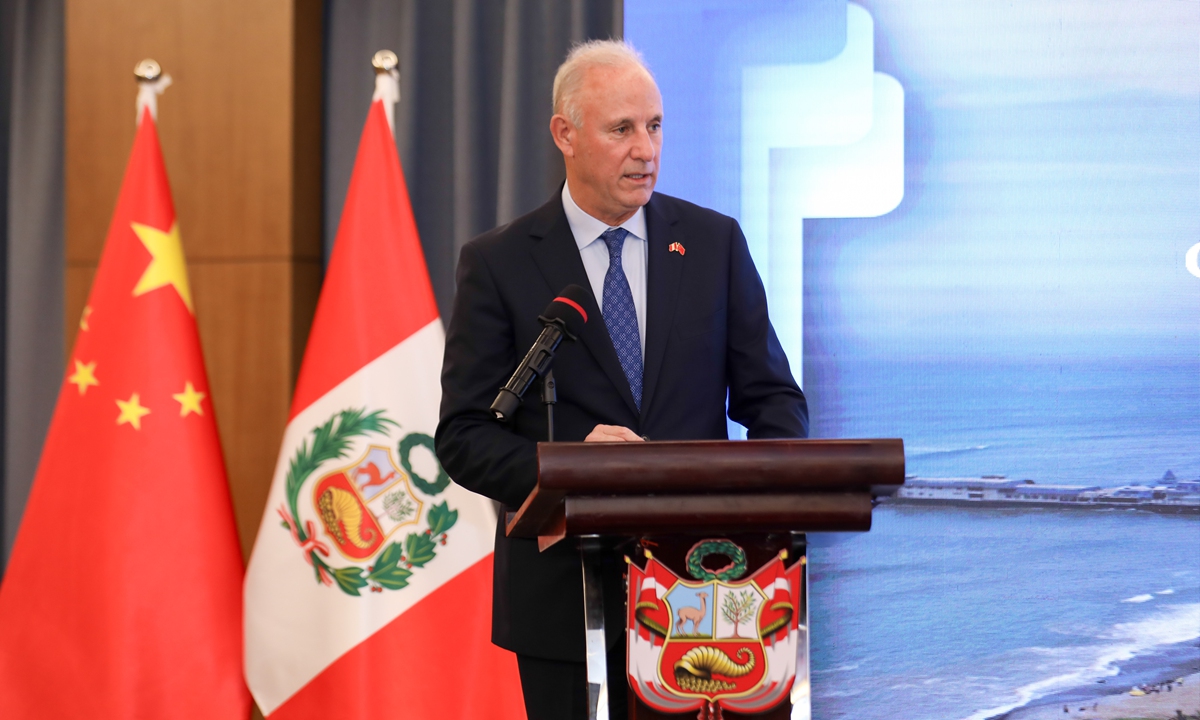Global demand for NEVs far exceeds current production capacity, Peruvian FM says, defying ‘overcapacity’ rhetoric

Peruvian Foreign Minister Javier González-Olaechea Franco Photo: Courtesy of the Peruvian Embassy in Beijing
Peru and China are pursuing green transformation and high-quality development. In this regard, there are many opportunities for enhanced collaboration in the green economy, Peruvian Foreign Minister Javier González-Olaechea Franco told the Global Times in an exclusive interview.
The remarks came after his official visit to China from April 28 to 30 - his first visit to the country since he took office - with the clear objective of addressing with the Chinese government the challenges world peace faces. He also dealt with a wide variety of topics related to cooperation and investment in a significant number of priority sectors for Peru and of interest to China, the foreign minister said.
While speaking about the need for cooperation in the green sector, González-Olaechea responded to some "overcapacity" fallacies targeting China's new-energy vehicle (NEV) industry.
Chinese NEVs are setting trends that lead to the green transformation of Latin American countries. Regional countries such as Peru, Chile and Brazil have been among the top destination markets for Chinese NEVs.
During a meeting between Chinese Foreign Minister Wang Yi and González-Olaechea in Beijing, the two sides agreed to deepen cooperation in fields such as green development, in addition to other sectors including infrastructure construction, the digital economy and health, the Xinhua News Agency reported.
The Peruvian foreign minister also highlighted Peru's keen interest in Chinese NEVs. He told the Global Times that the reason for this interest is "quite simple."
Chinese NEVs have become a popular choice for many developing countries because of their cost-effectiveness and environmental friendliness, González-Olaechea said.
Responding to the "overcapacity" rhetoric, the Peruvian foreign minister said that "evidence shows that, despite the rapid growth of Chinese electric vehicle exports, there remains a consistent global demand that far exceeds current production capacity. Reality and potential must drive our decisions."
"In addition, let us remember that there is a consensus on climate change and the urgent need to triple renewable energy capacity by 2030," González-Olaechea said, adding that Peru commits its words and its policy to this global goal for the benefit of humanity.
China has been Peru's largest trading partner for nine consecutive years, and Peru is China's second-largest investment destination and fourth-largest trading partner in Latin America.
In the first quarter, bilateral trade between China and Peru reached 70.97 billion yuan ($9.82 billion), a year-on-year increase of 14.3 percent, with both imports and exports expanding, according to the data from China's General Administration of Customs.
In addition to traditional sectors, new energy offers potential for cooperation in sectors where both sides can further tap into the market for win-win outcomes, Chinese experts said.
Many developing countries in Latin America, including Peru, are embracing green development to a significant extent, comparable to many developed countries worldwide, Wang Youming, director of the Institute of Developing Countries at the China Institute of International Studies in Beijing, told the Global Times on Wednesday.
The demand for green transformation in the region aligns with the advantages that Chinese companies offer, not only in the NEV industry but also in the solar and wind power sectors, Wang said.
As Chinese companies expand their global presence with competitive products, Latin American countries could enhance their industry upgrades by deepening cooperation with Chinese investors in the new-energy sector, Wang said, noting that this collaboration could also reduce regional countries' heavy reliance on exporting raw materials for economic development.

